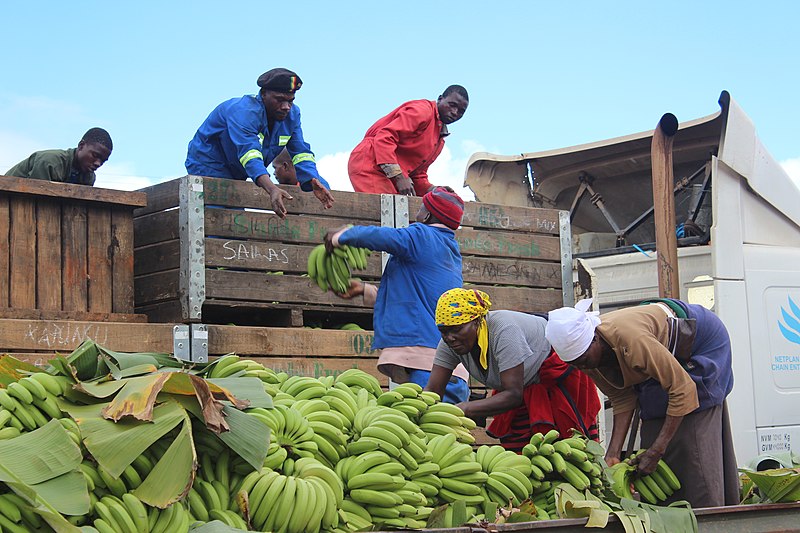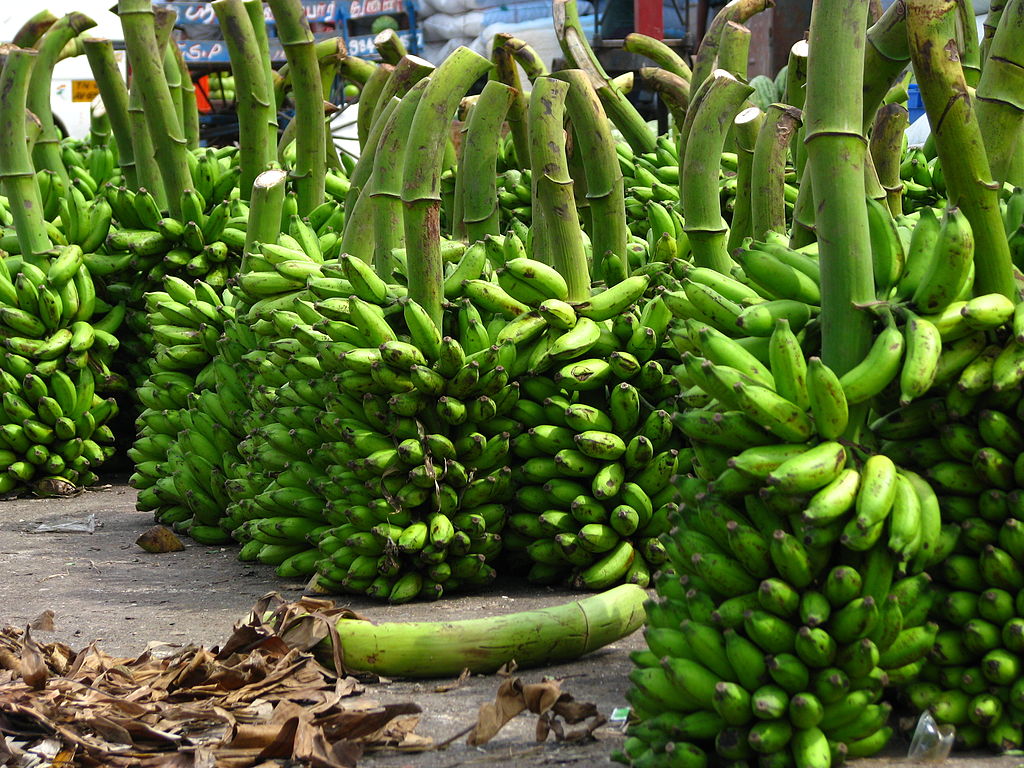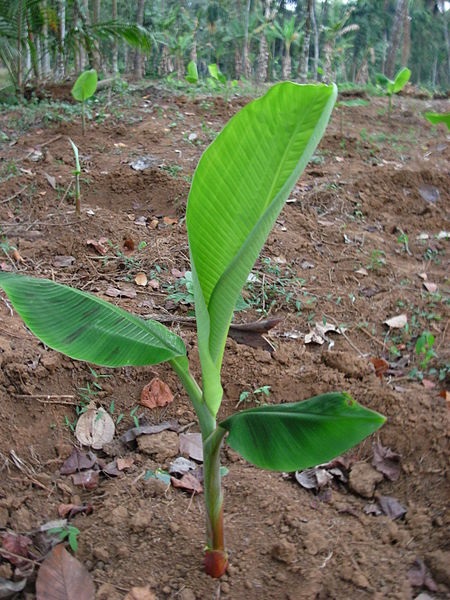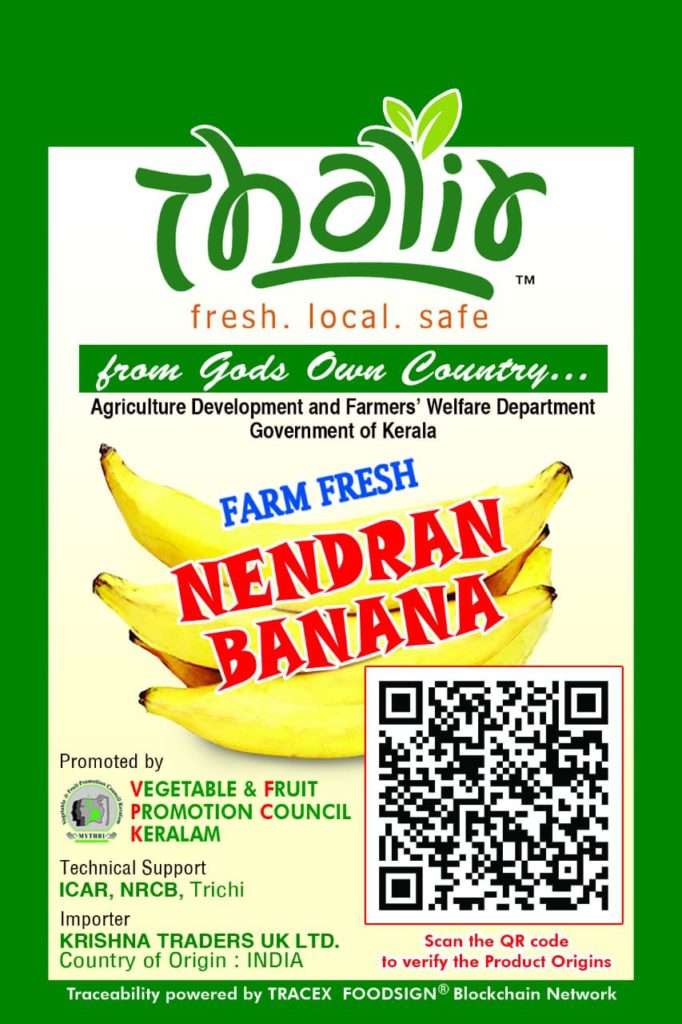Contact: +91 99725 24322 |
Menu
Menu
Quick summary: Bananas are one of the most favorite, popular and cheapest fruits in the world. The banana supply chain is fragmented and needs to conform to quality standards for the export market. The demand for consumer food safety, provenance, validation of certifications and transparency in the supply chain has triggered the need for traceability solutions in the banana supply chain

How would it be to know how the rich banana fruit, a complete food reached your plate right from the farm with a QR code scan? The supply chain being fragmented and complicated has a number of challenges that mandates the need for traceability in the banana supply chain.
Join us as we delve into the world of traceability in the banana supply chain, exploring its significance in promoting ethical practices, ensuring product quality and supporting environmental stewardship. Discover how traceability initiatives are revolutionizing the banana industry and paving the way for a more accountable and sustainable future.
Bananas are one of the most favorite, popular and cheapest fruits in the world. A wide variety of bananas are found in supermarkets, groceries, and markets across the world. The consumption is largest in North America, East Asia, and Europe. They are the fourth most commonly traded agriculture product.
Bananas are one of the most favorite, popular and cheapest fruits in the world. A wide variety of bananas are found in supermarkets, groceries, and markets across the world. Consumption is largest in North America, East Asia, and Europe. They are the fourth most commonly traded agriculture product.
India is the world’s leading producer of bananas, accounting for almost 26 % of total production. It is one of the major globally exported fruit and also an important source of livelihood and food.

The global banana market is projected to reach a CAGR of 4.5% during the period 2022-2027. The United States is a leading importer with a 16.7% of import share.
The global banana market is segmented across North America, Asia-Pacific, Europe, Africa, and South America. Though India and China rank high for banana production, the export volumes are less due to domestic consumption.

The growing awareness among consumers about healthy food has led to a focus on safe and quality food production. Bananas are a rich source of vitamins and minerals along with dietary fibers and proteins.
Bananas are also used in food products like desserts and cereals, apart from being consumed raw.
Bananas are inexpensive and easily available fruit. Hence the banana supply chain management is oriented towards the satisfaction of social, economic, and environmental aspects.
The global banana supply chain is very complex and depends on the collaboration of a number of players, with a resource-intensive requirement. The journey starts with the producer, packaging, exporter, distributor, retailer, and finally the consumer. It begins with the cultivation and planting of the banana in the exporting country. The complex journey requires a lot of effort and quality measures to protect the fruit as it is vulnerable to mishandling and damage.

The banana production starts at the farm. Banana production takes about nine to twelve months. In order to maintain its freshness, it is necessary that the bananas are harvested when they are green. Once grown and harvested, the farmers can send them for packaging and transport. It is necessary that the farmer keeps track of the harvest schedules of the bananas along with the farm information so that it helps to trace back the origin and conditions under which they were grown.
After the harvest, the bananas are inspected, separated into lots, washed, and packed in boxes. The boxes are labeled mentioning the destination. The bananas are placed in a temperature-controlled environment to prevent further ripening. These are then transported to ports where they begin their global journey.
The bananas need to be in a hibernated state. These bananas are kept in cold storage to preserve their state. Some companies are adopting Remote Container management technology in the form of reefer containers to remotely track the data like temperature, humidity, and power settings. This helps in the safe transportation of bananas to destination countries.
After the journey across seas, the banana containers arrive at the destination ports where they are transported to temperature-controlled facilities. They are kept here till orders are finalized. Some of the crates are sent for the ripening of bananas. This is a slow and precise process.
The bananas are shipped to retail distribution centers and grocery stores in refrigerated trucks. Temperature control is vital throughout the banana journey. A temperature lower than 13 degrees C or higher than 18 degrees C can damage the appearance of the fruit. Along with air circulation, ethylene gas and hydrocarbons are also fed into the chambers to ensure proper ripening.
The need for food safety and consumer demand for how the food is produced, processed and the origin has triggered the necessity of traceability systems in the banana supply chain.
Authenticity and product provenance are of vital importance.
Track and Trace systems are a necessity to ensure timely product recalls in case of food security incidents.
Banana production also needs to satisfy the certifications from Fairtrade, Rainforest Alliance, and the like to guarantee sustainable production, and promote the conservation of the environment and bio-diversity. Certification labels are a must to prove their authenticity and consumers are ready to pay the extra price for this.

The banana supply chain also needs to conform to the quality standards for the export market. The banana producers need to have an established set of practices for crop management.
Farm management and Harvest management help farmers to build better market linkages with effective crop yields.
Streamlining of post-harvest processes and efficient inventory management help to reduce wastage. The end-to-end traceability gives a digital identity to the banana, assuring consumers of safe and trustworthy produce.
Supply chain transparency is going to become a world standard by 2030 and this will be possible through digital interventions with blockchain technology.
Read more on how blockchain is revolutionizing the food and Agri value chains
The distributed ledger system helps to capture data in real-time and share it on a common platform across all stakeholders, thereby increasing efficiency and mutual trust. It enables better traceability and increases the transparency in the supply chain. Smart contracts automize many of the processes, reducing time and costs.
The track and trace systems allow targeted recalls, saving costs and time. The verifiable and immutable data renders a single source of truth, assuring accountability and authenticity of claims. Provenance helps to establish and prove Fairtrade and other certifications ensuring sustainability. The QR code farm to fork story builds consumer trust and assures a quality product adhering to compliance requirements. The harvest trackers and data management using blockchain technology helps in the post-harvest processes of banana production.

TraceX’s FOODSIGN, a digital traceability platform powered by blockchain provides end-to-end traceability of the supply chain.

The Vegetable and Fruit Promotion council (VFPCK) , Kerala incorporated FOODSIGN to digitize the banana supply chain and track their journey from the Kerala farms to the UK.
The Nendran banana from Kerala is GI-tagged and validating the sourcing claims on this platform was a boost to the export process.
The entire journey was captured on a QR code to help consumers recreate the transparent journey of the banana from farm to plate.
Read more on this banana journey
TraceX also works with other organizations to digitize the banana supply chain for the FPOs connected with them. The red banana variety has an export market and TraceX provides the digital solution for supply chain traceability. The supply chain digitization creates a digital identity for the banana, assuring a quality and safe product for consumption.
From ensuring ethical practices and product quality to supporting environmental sustainability, traceability is a game changer for the banana sector. By implementing robust traceability systems, stakeholders can enhance transparency, build consumer trust and drive positive change throughout the value chain.
